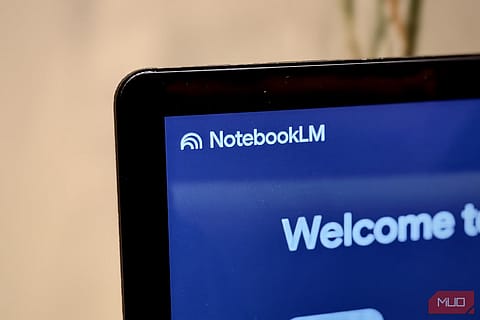Google’s NotebookLM is transforming documents into AI-driven conversations and podcasts with a touch of magic
Google’s NotebookLM is revolutionising how we interact with information, turning documents into dynamic, AI-powered conversations and podcasts with ease.

While a friend of mine wasn’t looking, I fed one of his articles into one of Google’s most interesting AI tools. Just minutes later, I sent him a link and messaged him to listen to a podcast I had found because it was relevant to him.
It took no time for me to receive a shocked phone call. “Who are these two people, and how are they podcasting about my article?” After a good laugh, I assured him the article hadn’t been hijacked by anyone and explained that the two people were actually AI voices. The podcast had been generated by Google’s NotebookLM with seemingly little effort—and more than a little AI magic.
Transforming your documents into natural-sounding conversations is just one of the things NotebookLM does. But first, if you can’t wait to see how it works, open Chrome and type "Google NotebookLM" in the address bar. Even before you finish, the site will load, and all you have to do is sign in with your Google account. Unless you’ve paid for 2TB of storage, Gemini Advanced, etc., you’ll find yourself using the free version of NotebookLM—but that’s still very powerful.
For something so innovative, the NotebookLM interface is mercifully simple. Tap a plus sign to start a new notebook. Next, start adding sources of data because this tool doesn’t fetch information from the internet; it relies solely on what you provide. You can add up to 50 items or sources—or 300 if you have the paid Plus version. These sources can include documents, slides, PDFs, written notes, audio and video files, any text you paste, and even YouTube videos.
The magic begins when you move to the Chat and Studio areas and start interacting with your information. You can ask for a briefing, a timeline, a comprehensive study guide, a quiz, or FAQs. There’s a search bar where you’ll find auto-generated questions, but you can also enter your own. The more specific the question, the more useful the answer.
As you receive responses to your questions and instructions, you realise that the tool actually reads and understands the information. It doesn’t just regurgitate it in a new format on command—it provides insightful material, including ideas. You can generate an audio overview to quickly absorb information from, say, 25 sources, allowing the AI voices to narrate the main points and key learnings. Or, you can choose to generate a full, deep-dive conversation in a podcast style.
An incredible new experimental feature lets you talk to the AI voices, interrupting them to request a focus on specific topics or even asking them to explain things in simpler terms. There’s also a customisation box where you can guide how the voices shape the conversation. I even coaxed the AI voices into discussing themselves—and they were impressed. If I feed this article in as a source, I can have the voices talking about the voices, discussing the voices, discussing the voices. It can get complicated.
Recommended Stories
NotebookLM is only just beginning to be noticed by the general public as Google continues developing it and adding new features. But already, users have reported innovative applications. One user added all the documents related to a newly purchased house and used the question feature to quickly locate specific details when needed. Another uploaded Italian language instruction material (you can even add a book in a compatible format) and generated a customised study guide for useful phrases for a specific travel destination. Some users have even leveraged it for journaling, allowing the AI to surface insights from behaviour and activity patterns—perspectives only an AI can provide objectively.
In the workplace, NotebookLM has been used to create marketing and branding materials, train sales teams, develop onboarding guides, and more. When integrated with third-party apps or supplemented with external data, its potential use cases expand exponentially.
The possibilities in education are limitless. The tool can summarise books, generate learning materials, and synthesise information from multiple sources—helping users understand how different documents on the same topic relate to one another.
Why didn’t anyone think of a tool like NotebookLM before? The short answer: I have no clue. The long answer: AI’s recent leap from the lab into real life has only now made advancements in Large Language Models (LLMs) possible. Only recently has so much computing power been available to users—even on a smartphone. And only now have LLMs become sophisticated enough to effectively ground themselves in user-provided data.
This marks a huge shift in AI’s practical usefulness—making it far more than just a gimmick. It’s nothing short of AI magic.